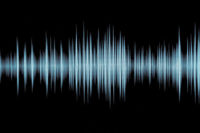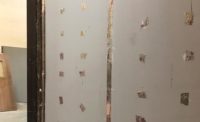Sound Gaps

Merely putting additional sealant over the joint that has separated may not properly seal the joint as the newly applied sealant is only 1/8-inch thick and the proper adhesion should be at 1/2-inch thick.

CEMCO DDA (deflection drift angle) permanently seals off the slots in the slotted track.

CEMCO FAS Track 1000 with backer rod and flat tape can seal off the deflection joint while still providing movement with fire, smoke and sound protection.





The next wave of construction defects claims is here and it’s making quite a splash. Unlike construction defects that focused around mold and water infiltration caused by heavy rain and/or faulting construction, sound defects can happen all day, every day and the current specified STC rating listed in the building codes may still not be good enough for most people as the majority of people are easily annoyed by loud neighbors, leading to reduced quality of life.
Sound consultants are busier than ever as most developers of high rise residential construction will employ their services to make sure the STC ratings are maximized. Although the intentions of the sound consultant are valid, their means and methods often fly in the face of the way buildings are actually constructed, tested, and perform.
Many sound consultants rely heavily upon third party sound tested wall assemblies; however many of those tests are 30 to 40 years old. Back then the composition of the gypsum drywall was different and it continues to evolve today with more and more contractors wanting to use lightweight drywall panels. The weight and composition of the drywall will affect the STC rating. The ICC G2-2010 Guideline for Acousticsrecommends that testing must be done by an accredited third party and should be less than 20 years old.
Third Party Testing
The majority of third party sound tests are done with 25 gauge steel studs at 24 inches-on-center as this will maximize the STC rating. However, high rise residential construction cannot be built solely from 25 gauge studs. All framed openings, such as doors or windows, will need to be done in 20 gauge studs in order to handle load of the opening. All head-of-wall top tracks on fire rated walls are also minimum 20 gauge steel. In addition, any walls that require backing for cabinets, hand rails, television sets and the like will also need to upgrade to a minimum 20 gauge stud and will likely have to change from 24 inches-on-center to 16 inches-on-center. All of which will decrease the STC rating from that of a 25 gauge stud wall at 24 inches-on-center.
Contractors will also have to construct the wall with the ability to deflect at the head-of-wall joint. The amount of movement is determined by the structural engineer. At fire rated walls, the contractor will have to build a third party tested joint assembly in accordance to UL-2079 in order to provide the dynamic movement and fire/smoke rating for the particular joint assembly.
However third party sound tests never have to undergo a dynamic movement test before being sound tested the way the fire rated walls have to be tested for movement prior to testing for fire and smoke passage. In today’s heavily litigated construction defects industry, there has never been more need for this to change. Sound wall assemblies should be tested for dynamic movement the same way fire and smoke walls are tested for movement. Without this test data requirement contractors can be left out to dry when they take on the recommendations of the sound consultant as most sound consultants adamantly require acoustic sealant everywhere without even considering that acoustic sealant will separate from the edge of the drywall. This separation can happen weeks, months or years later. If a call ever goes out to field test that particular wall and the acoustic sealant separates, all blame will be put on the builder even though he was following the direction of the sound consultant.
The main issue for all types of sealants is that it naturally wants to separate from the raw edge of the drywall leaving a gap between the sealant and the drywall. Unfortunately, this is the worst possible area to have a separation gap in the sealant because directly behind that gap is likely a slotted header track. The slotted header track has a series of vertical slots, 1/4-inch wide, 1-inch-on-center that can provide a direct sound flanking path to the other side of the wall.
Acoustic Sealant vs. Fire Sealant
The composition of acoustic sealant vs. fire sealant is very different. Fire sealant has far more elastic properties as it must aid in the ability to seal off a joint after movement that a building structure will naturally encounter. Acoustic sealant is much lower in cost and provides very little protection within head-of-wall joints that will encounter movement. At the time of construction both of these head-of-wall joints will likely be inspected and signed off but as the building structures go through its natural procession of movement these joints can and will separate creating sound flanking paths and require long term maintenance for optimum performance.
That is why the ICC G2-2010 Guideline for Acousticshas recommended more field inspections of assemblies that have frequent field failures. The appendices in the ICC G2-2010 Guideline for Acousticsalso offer additional insight into how to inspect, common issues, typical field failures and more. This will draw attention to issues, create call backs and provide additional challenges for contractors and owners. More opportunities will exist for products and assemblies that are known to have few issues.
Products like CEMCO's DDA (Deflection Drift Angle) are known to have fewer issues because no matter how much movement the building encounters DDA seals off the slots on the slotted header track. The product is a steel/intumescent angle that will not shrink, will never require maintenance if properly installed, and provides consistent protection from fire, smoke and sound passage for the sustainable life of the assembly.
Closing Thoughts
In order to limit contractor exposure to construction defect claims caused by sound flanking, use products that will not shrink, and provide unlimited movement. This way not only will the joint provide protection from sound, fire and smoke passage when first assembled at the time of construction, but it will also provide the same protection for years to come.
Sound consultants like many other building consultants like to offer their clients a “belt and suspender” approach to wall assembly detailing. It’s basically a backup plan if one line of defense fails you have a secondary layer of protection. Using products like those mentioned will provide a consistent seal to prevent sound, fire, or smoke passage within the deflection joint. Following that up with a secondary line of protection by placing open cell backer rod into the deflection gap and covering it with joint compound and flat tape will still allow the joint to deflect while keeping mass in the joint for an even finish and optimum STC ratings.
Looking for a reprint of this article?
From high-res PDFs to custom plaques, order your copy today!












